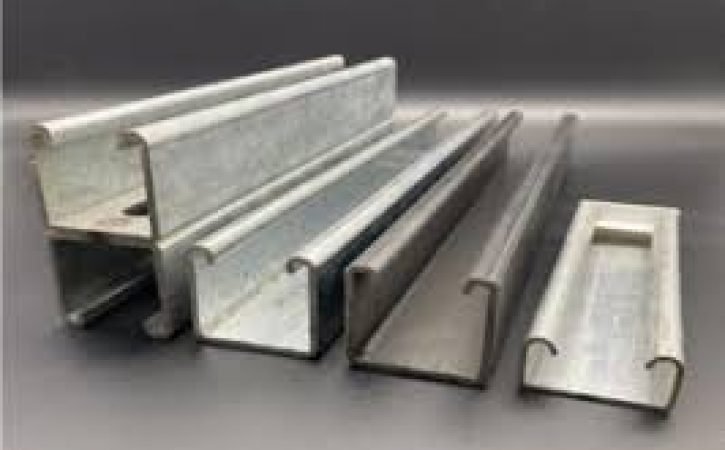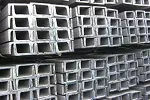
What Are the Advantages of Cold Drawn Steel?
Cold drawn steel is a vital material in various industries due to its exceptional mechanical properties and versatility. But what exactly are the advantages of cold drawn steel? This article will explore the benefits of cold drawn steel, its manufacturing process, and its applications in different sectors. Understanding these advantages will provide a comprehensive insight into why cold drawn steel is a preferred choice for many engineers and manufacturers.
Enhanced Strength and Hardness
One of the primary advantages of cold drawn steel is its increased strength and hardness. During the cold drawing process, the steel undergoes significant plastic deformation, which results in work hardening. This hardening effect enhances the material’s yield strength and tensile strength, making it more resistant to deformation under load.
For example, cold drawn steel is often used in the automotive industry for manufacturing high-stress components such as drive shafts, axles, and suspension parts. The enhanced strength ensures that these components can withstand the demanding conditions they are subjected to, such as high speeds, impacts, and heavy loads.
Superior Surface Finish
Cold drawn steel boasts a superior surface finish compared to hot rolled steel. The cold drawing process involves pulling the steel through a die, which not only refines the shape and dimensions but also improves the surface quality. The resulting finish is smooth and free of scale, which is common in hot rolled steel.
This superior surface finish is particularly advantageous in applications where aesthetic appearance and surface integrity are crucial. For instance, in the manufacturing of precision shafts and rods used in machinery and equipment, the smooth surface finish of cold drawn steel minimizes friction and wear, thereby enhancing the performance and longevity of the components.
Improved Dimensional Accuracy
Another significant advantage of cold drawn steel is its improved dimensional accuracy. The cold drawing process allows for tighter tolerances and more precise control over the final dimensions of the steel. This precision is achieved because the steel is drawn through a series of dies that progressively refine its shape and size.
In industries where precision is paramount, such as aerospace and medical device manufacturing, the dimensional accuracy of cold drawn steel ensures that components fit together seamlessly and function as intended. For example, surgical instruments and aerospace fasteners require exact dimensions to perform reliably and safely, making cold drawn steel an ideal material for these applications.
Better Mechanical Properties
Cold drawn steel exhibits better mechanical properties compared to its hot rolled counterpart. The process of cold drawing refines the grain structure of the steel, resulting in improved mechanical characteristics such as increased hardness, tensile strength, and yield strength.
These enhanced properties are particularly beneficial in applications that demand high performance and reliability. For example, in the construction industry, cold drawn steel is used for reinforcing bars and structural components that must bear significant loads and stresses. The improved mechanical properties ensure that the steel can support the required loads without failing, thereby contributing to the safety and durability of the structures.
Enhanced Machinability
Cold drawn steel offers enhanced machinability, which is a critical factor in the manufacturing process. The improved surface finish and refined grain structure of cold drawn steel make it easier to machine with precision. This means that cutting, drilling, and forming operations can be performed more efficiently and with greater accuracy.
In the manufacturing of precision components, such as gears, bearings, and fasteners, the enhanced machinability of cold drawn steel reduces production time and costs. The material’s consistency and predictability during machining also lead to fewer defects and higher-quality finished products.
Cost-Effectiveness
While cold drawn steel may have a higher initial cost compared to hot rolled steel, its advantages in terms of strength, precision, and machinability can result in cost savings in the long run. The superior mechanical properties and dimensional accuracy reduce the need for additional processing and rework, thereby lowering overall production costs.
For example, in the production of automotive parts, the use of cold drawn steel can lead to fewer rejects and less waste, which translates into cost savings for manufacturers. Additionally, the enhanced performance and durability of cold drawn steel components reduce maintenance and replacement costs, further contributing to cost-effectiveness.
Versatility in Applications
The versatility of cold drawn steel is another key advantage. It can be used in a wide range of applications across various industries, from automotive and aerospace to construction and medical devices. The material’s combination of strength, precision, and surface finish makes it suitable for diverse applications that require reliable and high-performance components.
In the automotive industry, for example, cold drawn steel is used in the production of engine components, transmission parts, and suspension systems. In the aerospace industry, it is used for critical fasteners and structural components that must meet stringent performance and safety standards. In the medical field, cold drawn steel is used for surgical instruments and implants that require precision and reliability.
Environmental Benefits
Cold drawn steel also offers environmental benefits due to its efficient manufacturing process. The cold drawing process generates less waste compared to hot rolling, as it produces more precise and finished products with fewer defects. Additionally, the improved strength and durability of cold drawn steel components reduce the frequency of replacements, leading to less material consumption and waste over time.
For example, in the construction industry, the use of cold drawn steel for reinforcing bars and structural components can contribute to more sustainable building practices. The material’s longevity and performance reduce the need for frequent repairs and replacements, thereby minimizing the environmental impact associated with construction activities.
The Manufacturing Process of Cold Drawn Steel
Understanding the manufacturing process of cold drawn steel helps to appreciate its advantages fully. The process begins with hot rolled steel, which is then pickled to remove scale and impurities. The cleaned steel is subsequently drawn through a die to achieve the desired shape and dimensions.
The cold drawing process involves several stages of drawing, each progressively refining the steel’s shape and size. This method allows for tight control over the final product’s dimensions and mechanical properties. The result is a high-quality steel with improved strength, precision, and surface finish.
Applications of Cold Drawn Steel
Cold drawn steel finds applications in various industries due to its superior properties. In the automotive industry, it is used for manufacturing drive shafts, axles, and suspension components that require high strength and precision. In the aerospace industry, it is used for critical fasteners and structural components that must meet stringent performance and safety standards.
In the construction industry, cold drawn steel is used for reinforcing bars and structural components that must bear significant loads and stresses. In the medical field, it is used for surgical instruments and implants that require precision and reliability. The material’s versatility and performance make it an ideal choice for a wide range of applications.
Conclusion
Cold drawn steel offers numerous advantages that make it a preferred choice for various industries. Its enhanced strength and hardness, superior surface finish, improved dimensional accuracy, and better mechanical properties contribute to its high performance and reliability. The material’s enhanced machinability and cost-effectiveness further add to its appeal.
Moreover, the versatility of cold drawn steel allows it to be used in a wide range of applications, from automotive and aerospace to construction and medical devices. Its environmental benefits, due to efficient manufacturing and reduced waste, make it a sustainable choice as well.
Understanding the advantages of cold drawn steel and its manufacturing process provides valuable insights into why it is widely used in different sectors. Its combination of strength, precision, and surface finish makes it an ideal material for applications that demand high performance and reliability. Whether in the production of automotive parts, aerospace components, or medical devices, cold drawn steel stands out as a superior material that meets the stringent requirements of modern engineering and manufacturing.
Category
Have any Query? Feel free to drop a mail to us.











